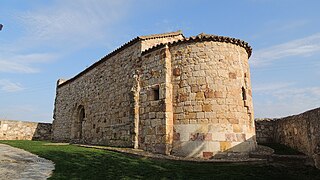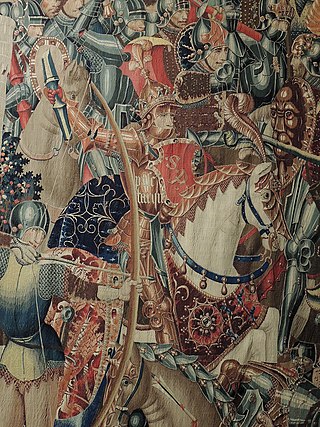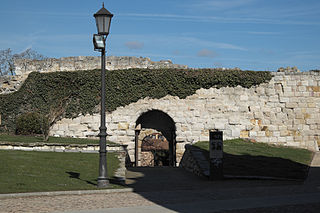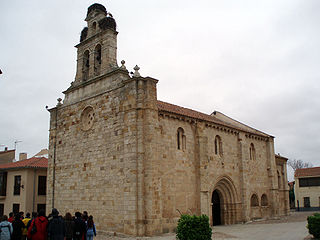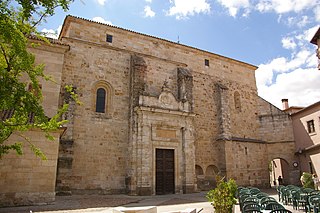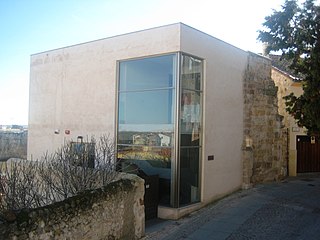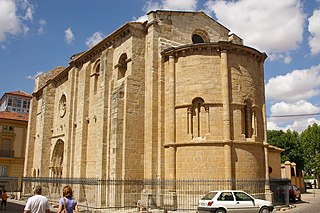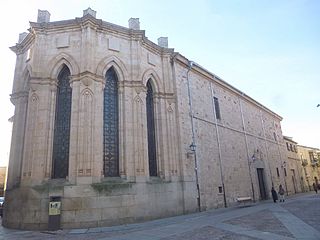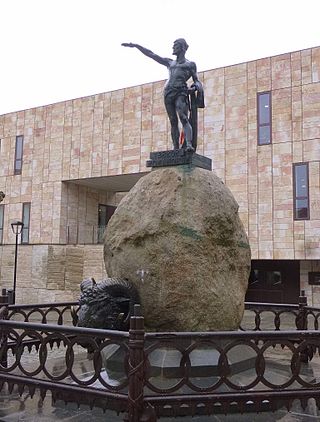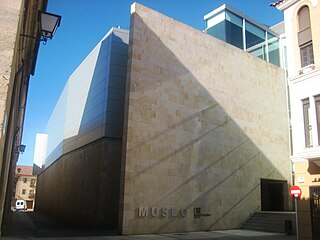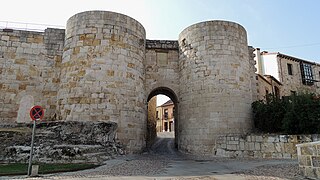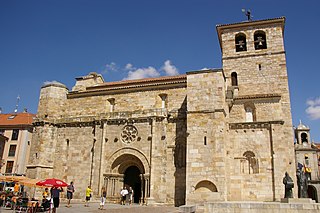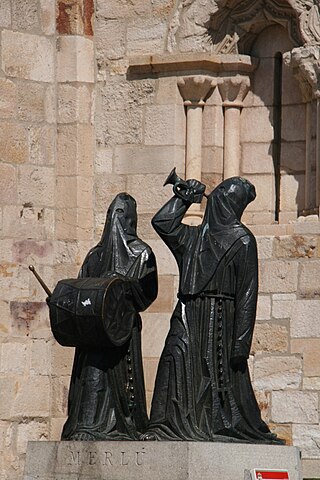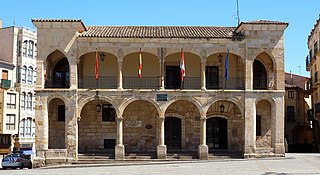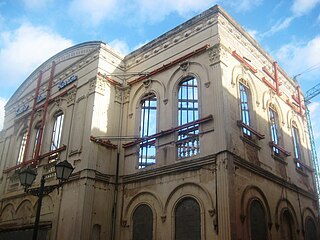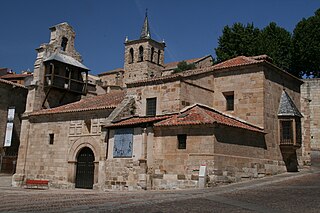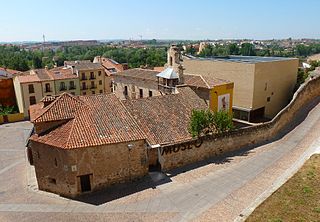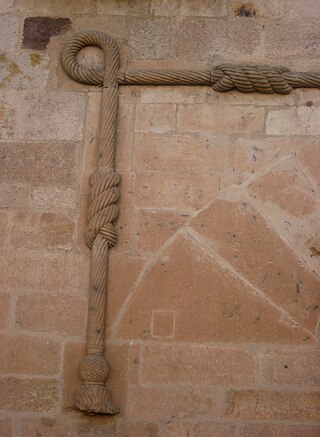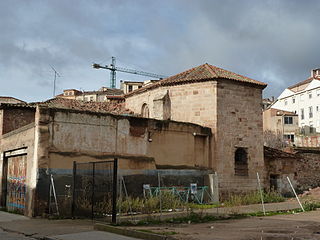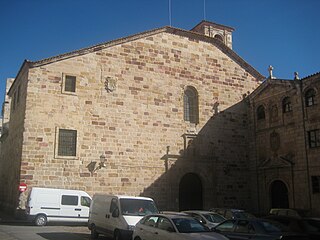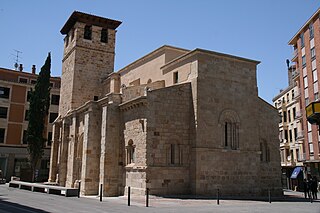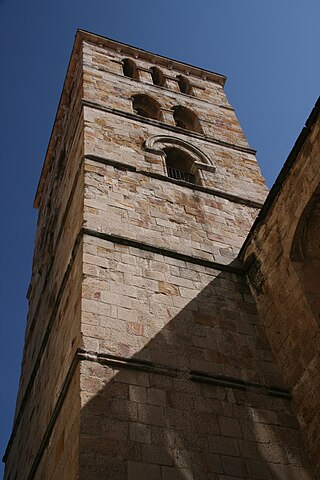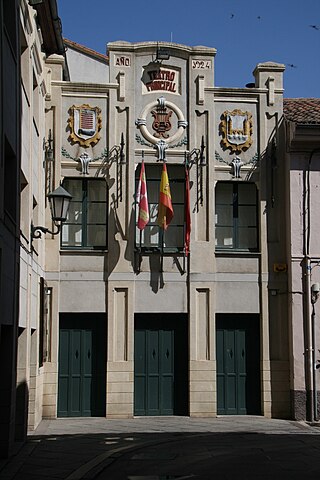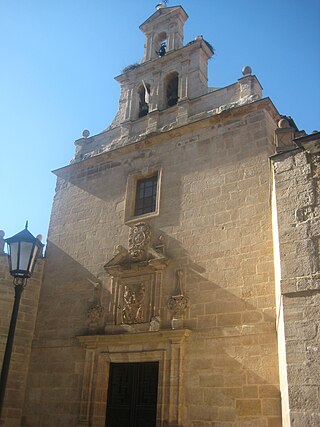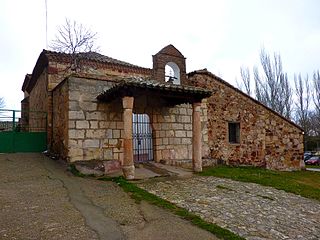Self-guided Sightseeing Tour #1 in Zamora, Spain
Legend
Guided Free Walking Tours
Book free guided walking tours in Zamora.
Guided Sightseeing Tours
Book guided sightseeing tours and activities in Zamora.
Tour Facts
6.5 km
171 m
Experience Zamora in Spain in a whole new way with our free self-guided sightseeing tour. This site not only offers you practical information and insider tips, but also a rich variety of activities and sights you shouldn't miss. Whether you love art and culture, want to explore historical sites or simply want to experience the vibrant atmosphere of a lively city - you'll find everything you need for your personal adventure here.
Individual Sights in ZamoraSight 1: Iglesia de Santiago el Viejo
The church of Santiago El Viejo, sometimes also known as Santiago de Los Caballeros and Santiago de Las Eras, is a Romanesque church in the city of Zamora, Castile and León, Spain.
Sight 2: Museo Catedralicio
The Cathedral Museum of Zamora is the main museum of the diocese of Zamora.
Sight 3: Portillo de la Lealtad
The Portillo de la Lealtad is an access to the first walled enclosure of the city of Zamora.
Sight 4: Iglesia de San Isidoro
The church of San Isidoro is a Romanesque monument in Zamora, Spain. It is located in the Plaza de San Isidro s/n. It was the temple founded by Sancha, sister of Alfonso VII, who had it built inside the first walled enclosure of the city. It is located in the vicinity of the Portillo de la Lealtad.
Sight 5: Iglesia de San Pedro y San Ildefonso
The Archpriestly Church of San Pedro and San Ildefonso, is a temple, of Romanesque origin, in the city of Zamora, Spain, the largest and most important in the town after the Cathedral. By concession of Don Juan de Aguilar it was declared an Archpriest's Church in 1500. It has been a National Monument since 1974.
Sight 6: Centro de Interpretación de las Ciudades Medievales
The Medieval Cities Interpretation Centre is an exhibition space located in the Spanish city of Zamora dedicated to disseminating what the cities of Europe were like during the Middle Ages, with special attention to the capital of Zamora itself.
Wikipedia: Centro de Interpretación de las Ciudades Medievales (ES)
Sight 7: Iglesia de Santa María Magdalena
The Santa María Magdalena de Zamora is a church located in Zamora, Spain.
Sight 8: Iglesia y Convento del Tránsito
The convent of Corpus Christi, also called Convent of Transit, of the Discalced Poor Clares in Zamora (Spain) was built at the beginning of the sixteenth century, as the house of Doña Ana de Osorio and Don Juan de Carbajal, being Doña Ana de Osorio who in her will ordered to donate "the houses of her dwelling and all her property, so that a monastery of the first rule of Santa Clara could be founded, who are commonly called "Descalzas"".
Sight 9: Iglesia de San Cipriano
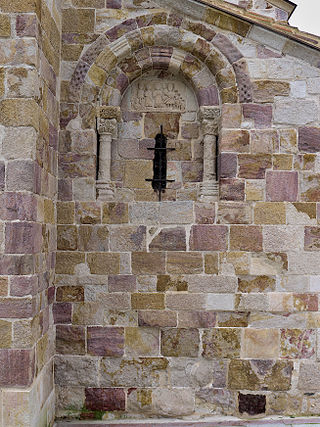
The church of San Cipriano is a Romanesque church located in Zamora, Castile and León (Spain). The original church dates from the eleventh century, although its complete restoration and rehabilitation was carried out at the end of the twentieth century, arriving at the beginning of the twenty-first century with an eclectic appearance. It is one of the oldest temples in the city. It was executed with three naves, of which only one exists today. Of the two original portals, only the southern one is preserved. The church has a tower, attached to its southwest corner. It has been a National Monument since 1931. She is retired to worship. It is currently the scene of the concerts of the International Music Festival "Pórtico de Zamora".
Sight 10: Estatua de Viriato
Viriato or the Monument to Viriathus is an instance of public art in Zamora, Spain. Dedicated to Viriathus and located in the eponymous plaza, the monument consists of a bronze sculpture of the Lusitanian chieftain-shepherd put on an unpolished stone pedestal that features a battering ram.
Sight 11: Museo Etnográfico de Castilla y León
The Ethnographic Museum of Castilla y León, located in the city of Zamora, is one of the four that make up the Network of Regional Museums of Castilla y León, along with the Museum of Iron and Steel and Mining of Castilla y León (MSM), located in Sabero, the Museum of Contemporary Art of Castilla y León (MUSAC), in León capital, and the Museum of Human Evolution, based in Burgos.
Sight 12: Iglesia de Santa María la Nueva
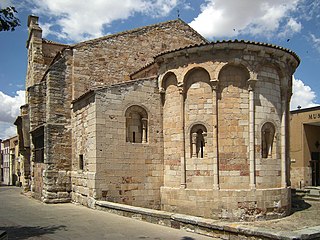
The church of Santa María la Nueva is a Romanesque temple located in the city of Zamora, Spain. In the Plaza de Santa María la Nueva. It is one of the churches in Zamora built at the beginning of the twelfth century. Burned during the Trout Mutiny in 1158, it was rebuilt. A spacious nave, the result of the fusion of its three primitive naves. It was declared an Asset of Cultural Interest in 1945. Inside, the baptismal font from the thirteenth century stands out.
Sight 13: Puerta de Doña Urraca
The Gate of Doña Urraca is a gate which gives access to the walled city of Zamora, Spain. It is named after the historical figure Urraca of Zamora.
Sight 14: Iglesia de San Juan Bautista
The church of San Juan Bautista is a Romanesque church located in Zamora, Castile and León (Spain). It is located on one side of the Plaza Mayor. The name of San Juan is due to San Juan Bautista and the New Gate was a doorway when the neighboring wall passed close to the square. It dates from the middle of the twelfth century. In 1961 it was approved as a Historical Monument. In one of its corners, already outside, you can find a modern statue dedicated to Merlú, a work that was erected in 1996 by the Zamoran sculptor Antonio Pedrero Yéboles.
Sight 15: Merlú
In Holy Week in Zamora (Spain), the Merlú is the name given to those couples of congregants of the Brotherhood of Jesus Nazarene whose task is to gather the other brothers to begin the processional parade.
Sight 16: Ayuntamiento Viejo de Zamora
The Old Town Hall of Zamora is a porticoed building located in the Plaza Mayor of Zamora. It is one of the oldest buildings in the Plaza along with the church of San Juan. It served as a City Council until 1950, just when the new building began to operate. Despite its antiquity, it is not the seat of the first city council that the city had. The current building, called the Old Town Hall, was built at the beginning of the seventeenth century and is in the Plateresque style. Among its most significant changes is the elimination of two of its towers, and the restoration of the building in 1977. It currently houses the offices of the Municipal Police.
Sight 17: Teatro Ramos Carrión
The Ramos Carrión Theater is a building with theater functions that is located in Zamora (Spain). The modernist-style building is the work of the architect Francisco Ferriol. A competition of ideas began in 1996 with the aim of completely renovating the building, with the aim of creating a cultural space. The works that end in 2011 maintain the entrance body. The building was built in honor of the Zamoran humorist Miguel Ramos Carrión who was born in a house located right in front of the theater.
Sight 18: Iglesia de Santa Lucía
The church of Santa Lucia is a Romanesque building located in the city of Zamora, Spain.
Sight 19: Museo de Zamora
The Museum of Zamora is a provincial museum located in the Plaza de Santa Lucía in Zamora, Spain, in the neighborhood that in medieval times was called "la Puebla del Valle". It is owned by the Ministry of Culture, with the management transferred to the Junta de Castilla y León.
Sight 20: Palacio del Cordón
The Palacio del Cordón is a building located in the city of Zamora (Spain), characteristic for being one of the few examples of the civil stately architecture of the city of Zamora of the sixteenth century. On its façade stands a chambrana in the shape of a Franciscan cord that was carved on the stone and in which the arms of its founders are protected. This ornamental motif on the façade is what provides the popular name of the cord.
Sight 21: Iglesia de San Leonardo
The Church of San Leonardo is a Romanesque church located in Zamora, Castile and León (Spain).
Sight 22: Iglesia de Santa María de la Horta
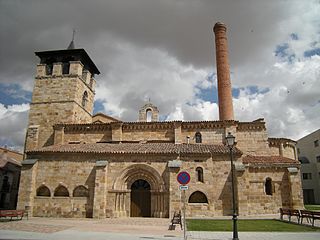
The church of Santa María de la Horta, also called simply the church of La Horta, is a Romanesque temple in the city of Zamora, Spain. It has been a National Monument since June 3, 1931.
Sight 23: Iglesia de San Andrés
The church of San Andrés is a temple, of Romanesque origin, located in the city of Zamora, Spain. In the twelfth century there was a temple with the same dedication. It was rebuilt between 1550 and 1570 on account of the indications of the will of Antonio de Sotelo Cisneros, one of the captains of Hernán Cortés in the conquest of Mexico. It is for this reason that there are details of Gothic architecture inside. Part of the north façade and the tower (pollarded) of the original factory are preserved.
Sight 24: Iglesia de Santiago el Burgo
The church of Santiago del Burgo or as it is sometimes called, Santiago el Burgo, is a Romanesque style temple located in the city of Zamora, Spain. Dated to the end of the twelfth century. It maintains its original structure of three naves, typical of the Hispanic Romanesque. It is the only church in the city that maintains this interior structure with a tripartite head. The church building is completed by a quadrangular tower located in the southwest corner. It is located in the centre of what is now Zamora, on the busy street of Santa Clara.
Sight 25: Iglesia de San Vicente Mártir
The Church of San Vicente Mártir is a Romanesque temple in the city of Zamora, Spain. Its tower and western façade were declared a National Monument in 1961. The church was built at the end of the twelfth century, or the beginning of the thirteenth.
Sight 26: Teatro Principal de Zamora
The Teatro Principal de Zamora was inaugurated in 1606 and built on the site of the old 'corral de comedias', where the convent of Santa Paula was formerly located. Located on the corner of San Vicente Street, it differed from the rest of its time by being covered and not having a charitable welfare purpose. Due to its small dimensions, it is popularly known as the "bombonera". It has been considered an Asset of Cultural Interest since the end of the twentieth century.
Sight 27: Iglesia de San Torcuato
The church of San Torcuato was a Romanesque temple located next to the gate of San Torcuato next to the walls. It was demolished in 1837 and the dedication of San Torcuato was moved to the current headquarters of the Church of the Convent of the Trinitarians Calzados. The current church is a Baroque-style temple that began its construction in 1673 and renovated in the eighteenth and nineteenth centuries after receiving the dedication.
Sight 28: Ermita del Carmen
The hermitage of the hermitage of Carmen del Camino or hermitage of Carmen Extramuros is a temple located in the municipality of Zamora.
Sight 29: Iglesia de Cristo Rey
The Church of Christ the King is a modern temple located in the city of Zamora (Spain).
Sight 30: Ermita de la Peña de Francia
The hermitage of Nuestra Señora de la Peña de Francia is a temple located in the municipality of the city of Zamora.
Wikipedia: Ermita de Nuestra Señora de la Peña de Francia (ES)
Share
How likely are you to recommend us?
Disclaimer Please be aware of your surroundings and do not enter private property. We are not liable for any damages that occur during the tours.
GPX-Download For navigation apps and GPS devices you can download the tour as a GPX file.
